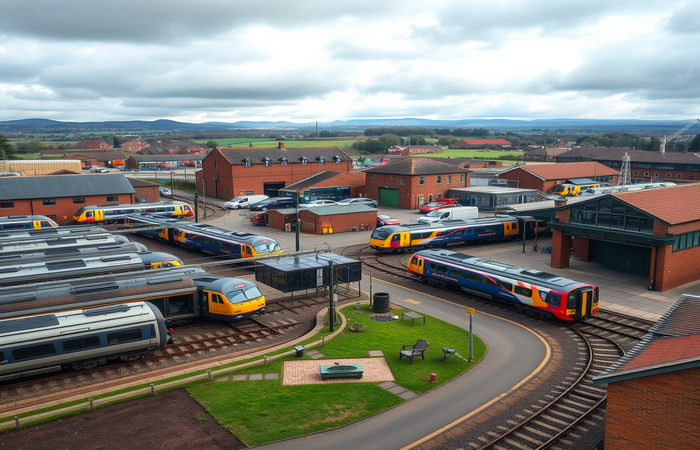NYC MTA E Line: Fast Track Success, Ahead of Schedule

This article explores the successful early completion of critical track replacement work on the New York City Metropolitan Transportation Authority’s (MTA) E Line subway, highlighting the project’s scope, the significance of timely infrastructure maintenance, and the implications for future funding and expansion projects. The MTA’s proactive approach to infrastructure renewal offers valuable insights into efficient project management and the broader challenges and opportunities facing large-scale urban transit systems. We will analyze the specifics of the E Line project, examining the challenges overcome, the benefits achieved, and the broader implications for the MTA’s long-term strategic goals for system-wide improvements. The timely completion of this project underscores the crucial importance of proactive infrastructure management within a complex, high-volume transit network and the necessity for continued investment in modernizing aging systems to ensure reliable and efficient service for commuters.
Early Completion of E Line Track Replacement
The MTA’s announcement of the near-week early completion of track replacement work on a section of the E subway line in Queens, New York, is noteworthy. This project involved replacing over 5,500 feet of track and approximately 7,800 feet of third rail (the electrified conductor rail supplying power to trains) near two stations. The existing rail infrastructure had reached the end of its useful service life, necessitating immediate replacement to maintain service reliability and prevent potential disruptions. This proactive approach demonstrates a commitment to preventing larger, more costly, and disruptive repairs later. The timely completion highlights efficient project management and the benefits of streamlined processes within the MTA.
Strategic Infrastructure Management and Funding
The early completion is not just a logistical success; it also has significant implications for future MTA projects and funding. Janno Lieber, president of MTA Construction & Development, emphasized the MTA’s increasing success in completing projects ahead of schedule and within budget. He linked this success to the need for continued federal funding to support ongoing improvements and prevent major service disruptions. The E Line project serves as a compelling case study for demonstrating the return on investment in proactive infrastructure maintenance. Preventing major service failures through preventative maintenance is demonstrably more cost-effective than reacting to catastrophic failures.
Community Impact and Future Phases
Assembly member Alicia Hyndman’s statement underscores the positive impact of the completed work on the Southeast Queens community. The improved reliability of the E Line will benefit residents who rely on this transit line for daily commuting and essential services. The project’s early completion also paved the way for additional track and third-rail improvements within the allotted timeframe, further enhancing the system’s overall performance. The initiation of the second phase of the project early next month indicates the MTA’s commitment to further upgrades and ongoing improvements to the E Line, enhancing overall efficiency and reliability.
Lessons Learned and Future Outlook
The successful and early completion of the E Line track replacement offers valuable lessons for large-scale infrastructure projects. Efficient project planning, execution, and proactive maintenance are crucial for maintaining reliable and safe transit systems. The project demonstrates the importance of well-defined project timelines, effective communication, and collaboration among stakeholders. This success story can serve as a model for other transit authorities, emphasizing the long-term benefits of strategic investment in infrastructure renewal. The timely completion should also contribute to increased confidence in the MTA’s ability to manage future projects effectively and efficiently.
Conclusion
The MTA’s successful completion of the E Line track replacement project ahead of schedule highlights the importance of proactive infrastructure management in maintaining a reliable and efficient public transportation system. This project’s early completion underscores several key takeaways. Firstly, it demonstrates the significant benefits of preventative maintenance over reactive repairs. By addressing aging infrastructure before major failures occur, the MTA minimizes costly disruptions and enhances overall system reliability. Secondly, the success of this project strengthens the case for continued investment in infrastructure improvements. The timely completion underscores the need for sustained federal funding to support the MTA’s ongoing efforts to modernize its aging network and provide improved service to its commuters. Thirdly, the positive community response to the project’s early completion showcases the importance of engaging with local communities and providing transparent communication regarding ongoing infrastructure projects. Finally, the project serves as a model for other transit authorities, demonstrating the potential for efficient project management and the tangible benefits of proactive infrastructure investment. The E Line project is not just a local success story; it’s a testament to the crucial role of well-managed infrastructure in supporting thriving urban communities and the broader economy.


